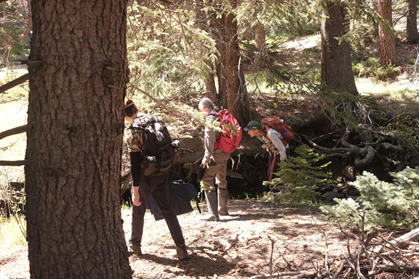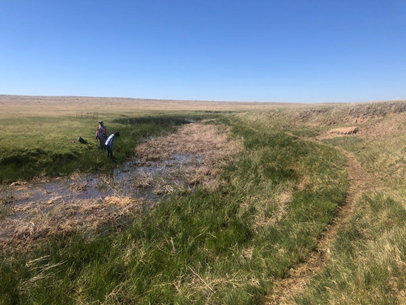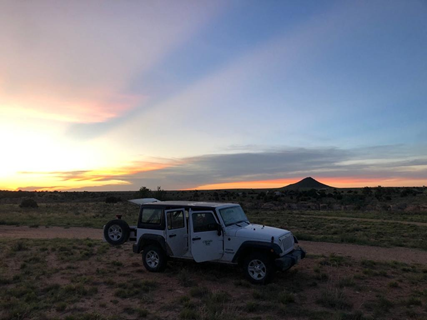This summer was one of the most fun and inspiring summers of my life as a Siegele intern with CNHP. I got to meet some of my best friends and I made invaluable personal and professional connections that I will nourish in the future. I also learned much more than I could have imagined about plants, wetlands, insects, ecosystems, camping, and much more.
My summer started in Gross Dam, located in Boulder County, where five interns joined a crew of CNHP staff to help them search for rare plant species found near the dam. The reason for this expedition was the expansion of Gross Dam, which would flood the area where these rare species are found; CNHP therefore set out to find these plants and map them so that seeds could be gathered and planted somewhere else away from the expansion area. Before this expedition, I was not very interested in plants, I thought plants were boring and I used to be overwhelmed by the amount of plants there are and how difficult it must be to identify them. Once we started to look for these rare plants, however, I got really invested in finding them and I was very motivated to be taking part in their conservation. I became good at identifying most of the plants we were looking for and I began to be curious about many other plants we encountered. Thankfully, I had three CNHP staff members who were very knowledgeable about plants (Jessica Smith and Pam Smith are pictured below) and who were able to identify any plant I saw out there and answer all of my botany questions. Being with them and with the other interns really inspired me and made me really interested in plants.

Another highlight of my summer was joining the Ground-Dependent Wetlands (GDE) crew for three hitches. I was joined by another intern, Tara, who became a close friend of mine after we spent so much time together. I also made really good connections with the GDE crew and, by the end of my time with them, I felt like I was part of a little family. I learned a lot working with the GDE crew; mainly I learned to identify a wetland based on its vegetation and hydrological attributes and I learned the monitoring methodology for GDE pretty well. The methodology included making a species list of every plant on the site which was usually done by our crew lead who was an experienced botanist. For this method I helped collect unknown plants so that they could be put in a plant press later on. My task with the GDE crew was usually invertebrate collection and water sampling; I also dug soil pits and identified the soil profile and horizons based on the texture and color of the soil. Since I was doing these methods for weeks I got pretty comfortable with them and gained a good work flow, which I think will be a great skill to have for my future field work as this type of data collection is important for any ecosystem. Pictured below is part of the GDE crew at one of our wetland sites. Unfortunately, in this particular wetland there was a dead cow right next to the site which made it a harder to collect data because of its odor.

Another cool part about my time with the GDE crew was getting a vehicle exclusively for the interns. We lived off a jeep (pictured below) for the three weeks we were out working and, even though we got it stuck in mud a couple of times, it was a great to be able to drive it through Colorado.

When I applied to be a Siegele intern I did not think I would get the position because it seemed like a position for people with a lot more experience but I’m glad I applied and I could not have asked for a better internship experience. Everyone at CNHP was amazing to work with and I hope I get another chance to work with them again.




